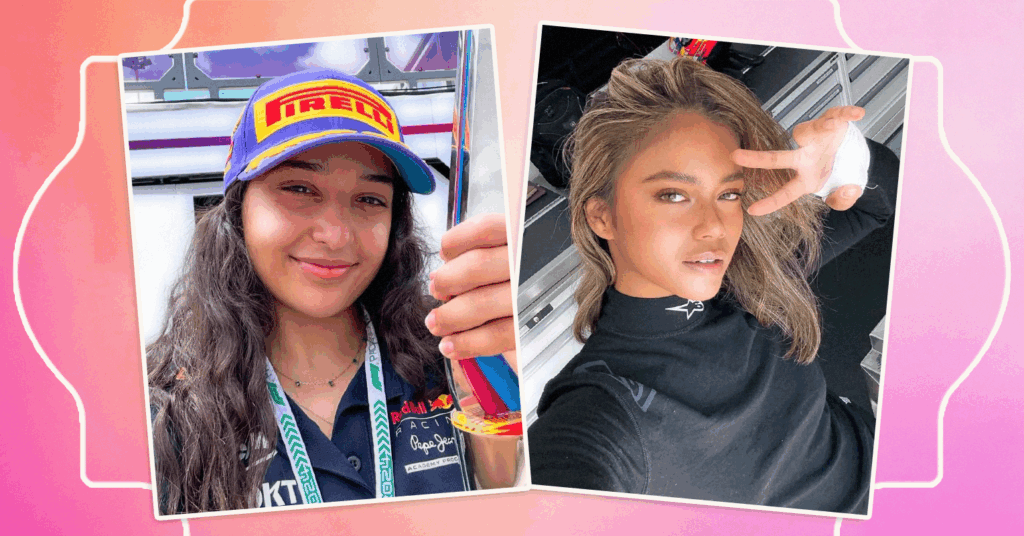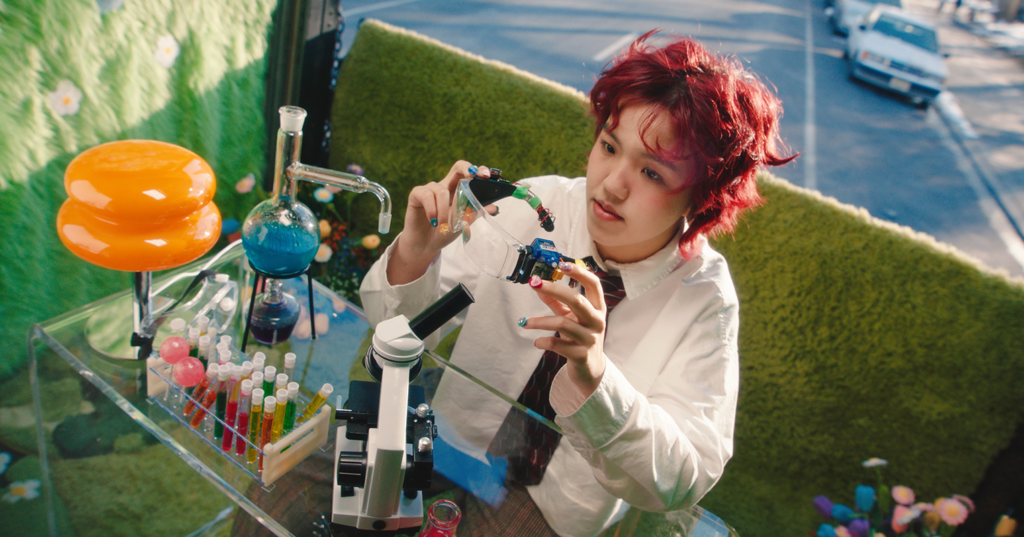4 Lessons We Learned After Watching “F1: The Academy” on Netflix

At the end of 2024, a Nielsen Sports study reported Formula 1 had captured the attention of 750 million fans. Yes, you read that right. Seven-hundred and fifty million people from around the world keep up with the global open-wheel, single-seater racing series. Since 2021, 50 million of those fans have joined this world of fast cars, high stakes, and pushing the absolute limits.
The same study discovered that women comprise 41% of the total fanbase, despite Formula 1 being a traditionally male-dominated sport. In addition, the fastest growing age demographic is 16–24 year olds. But how many female drivers have seats in F1?
Zero.
F1 Academy is changing that, one driver at a time. An initiative headed by motorsport icon Susie Wolff, F1 Academy is a racing series that spotlights female drivers who are turning heads with the support of Formula 1 constructors. During the 2024 season, 15 of the best female drivers from around the world had the chance to hone their skill and fight for the F1 Academy championship title.
The drivers, of course, all learn many lessons over the 2024 season — especially since the drivers have a two-year limit in the program — but so do we. With the race at the Zandvoort track in the Netherlands coming up on August 29, marking the close of the summer break, here are four lessons we learned while watching F1: The Academy.
Driving F1 Academy Forward
In 1958, the Italian driver Maria Teresa de Filippis was the first woman to start in an F1 championship (the Belgian Grand Prix). Fifty-six years later, Susie Wolff drove in a free practice session at the iconic British Grand Prix at Silverstone in 2014. That moment marked her as the first woman since 1992 to take part in an F1 weekend.
Wolff is now the Managing Director of F1 Academy, which launched in 2023 and dedicates itself to boosting talented female drivers into the world of Formula 1. Now featuring a lineup of 18 drivers with the support of F1 constructors — like Ferrari, Mercedes, and Red Bull — F1 Academy helps their drivers create their own seat at the table. Or, as F1 Academy’s tagline goes: “Fuelling the future of women in motorsport.”
Netflix brought the journey of F1 Academy to viewers through their new documentary series, F1: The Academy. The seven-part limited series officially dropped on May 25 and was produced by Reese Witherspoon’s company Hello Sunshine. Both Witherspoon and Wolff served as executive producers.
“We’re not just a moment; we’re a movement,” Wolff emphasized in interviews for the show.
Lesson #1: Growth Mindset Is Everything
Racing drivers live on the edge. Especially in Formula 1, where drivers are pushing the limits of both themselves and their cars for two-plus hours. (They sometimes drive at more than 370kph kilometers per hour, or 230 miles per hour.)
There is added pressure in F1 Academy, among the challenges shared by both racing series’ drivers: time. Drivers only have two years to compete in F1 Academy. It can propel you to new heights and open new doors, but once your two years are done, they’re done. So, F1 Academy drivers need to go full throttle and hit the gas — immediately.
But sometimes, life doesn’t go as planned. Expectations are high: from F1 Academy, from performance coaches, from your team, from fans, from the drivers themselves. As viewers witnessed in F1: The Academy, drivers such as Lia Block and Hamda Al Qubaisi needed to dig deep and rebuild from the bottom up. In the case of Block, the 17-year-old was a fierce champion in Rally racing but a novice in the world of single-seaters.
Al Qubaisi, too, had to start from square one. In 2023, her first year in F1 Academy, the Emirati driver crashed, causing her to shatter her radius. A five-hour surgery later, Al Qubaisi received the go-ahead to resume racing. But her mind kept hurtling back to her accident. Like Block, Al Qubaisi learned that moving forward towards ambitious goals and viewing any progress (no matter how small) as good progress. As long as you learn from your mistakes, you can always improve for next time. It’s not the end of the road, or rather, the track.
Lesson #2: Representation Matters
For those who are familiar with Netflix’s popular racing documentary series Formula 1: Drive to Survive, F1: The Academy is a bit of a tonal switch up. While the constructors — the companies who make the racing cars — are obviously still involved in the latter show, there is less emphasis on the business of racing and more on the individual drivers.
With this in mind, F1: The Academy taps more interviews with the drivers’ performance coaches among conversations with the drivers. The series is here to show that these racing drivers can drive and they can win, too. Just as Susie Wolff said in F1: The Academy, the program levels the playing field of motorsports and creates more opportunities to drive — and more opportunities to show who you are.
These 18 racing drivers were often the only girls on the track in a sea of boys. Many of them, like those in F1, started out karting on weekends. Now, F1 Academy drivers such as Maya Weug are shattering glass ceilings. The Dutch-Belgian athlete became the first female driver in Ferrari’s Driver Academy. Filipina Bianca Bustamanti, too, set new standards as the first female driver in McLaren’s development program. Amna Al Qubaisi also broke a record, becoming the first Middle Eastern woman “competing at an international level in single-seaters” (Episode 3).
And as a Chinese American adoptee, hearing Chloe Chambers’ story was such a moment of pride — and maybe a moment of sorrow. Before watching F1: The Academy, I never knew that there was a fellow adoptee competing (and winning!) in motorsports. My only hope is that young Asian American girls, including adoptees, can see Chloe and also believe: I can do that, too.
Lesson #3: Business Savvyness Can Take You Far
When one steps into the world of F1, it’s also the world of calculated partnerships, impromptu fashion runways, and impressive social media reach. As much as Formula 1 is about race car driving, it’s also about being business savvy.
The intersection of the business side of racing and social media appears most clearly in McLaren’s F1 Academy driver Bianca Bustamanti. In the Netflix show, viewers meet Bianca as she takes photos with fans eager to catch a glimpse of her outside the pit lane. As Bianca underscores, “Being Filipino and coming from a family background where we didn’t have a lot of money, initially it was always very hard to kind of pursue my passion and love for this sport because it is expensive. So I’ve had to learn the business side of motorsport to provide for my racing.” Her influence on social media as a racing driver helps her stay in the sport.
However, pressure is high across the board in F1 Academy. There are stakes in every aspect, every decision: race positions, finances, careers. Your next steps could be impacted if the ball is dropped even slightly on an opportunity such as the F1 Academy program.
So, business savvyness — especially on social media — can take you far. But showing everything you’ve got on the track and competing well can take you even farther.
Lesson #4: Grab the Wheel With Both Hands…You Never Know Where It Will Take You
By the end of seven episodes, I was left with feelings of excitement, pride, and hope. Throughout F1: The Academy, the drivers trained, pushed, broke down, and broke through until the end of 2024.
While she hit many roadblocks, Lia emerged stronger on the other side of the season. At the final race in Abu Dhabi, she pushed and overtook her way from P12 to P3. (Unfortunately, a 10-second penalty set Lia back a few places in the final standings.) The growth of the Rally-turned-F1 Academy driver encouraged Williams to keep her as their driver for her final F1 Academy year.
At the same race weekend, Hamda Al Qubaisi nabbed P2 in her last race in F1 Academy — and on home turf, too. She held off Dorianne Pin for this position until the chequered flag. This moment was extra special for the Emirati driver since her father, Khaled Al Qubaisi, also made the podium on this track 11 years earlier.
Meanwhile, Chloe Chambers was the first poach on F1 Academy. Although she raced for Haas during the 2024 season, this 2025 season, she is racing with Red Bull Ford. Bianca also demonstrated her power, especially when she has nothing to lose, namely in episode one of F1: The Academy. For this race, she clinched a P2 finish. Her F1 Academy journey may be over now (as 2024 was her second season in the program), Bianca continues to make waves in motorsport. As revealed at the end of F1: The Academy, the Filipina racing driver signed a deal with the British Elite Motorsport to race in GB3. A single-seater motorsport championship based in the United Kingdom, GB3 is a feeder series for Formula 1.
Then there’s the 2024 champion of F1 Academy: Abbi Pulling. In her first year, she didn’t win a single race. But the next? The English racing driver won nine races in the 2024 season and landed on the podium in all 14 races. Now, she’s the reigning champion of F1 Academy. As a result, she claimed a fully-funded GB3 seat with Rodin Motorsport. Racing alongside fellow F1 Academy driver Bianca Bustamanti, Abbi and Bianca are the only female drivers on that grid.
Over the course of F1: The Academy’s seven episodes, we witnessed and learned this message over and over again: you have got to seize the opportunity. Women race car drivers are historically underrepresented in the sport, but F1 Academy is changing that narrative — one race at a time.
Like Wolff said at the end of the season finale with a fire burning in her eyes, “Let’s show them what we’re made of.”
F1: The Academy is now streaming on Netflix. Plus, keep up with F1 Academy on Instagram, X, and YouTube.
Want to read about women in motorsports? Check out EnVi’s interview with Hana Burton here!



